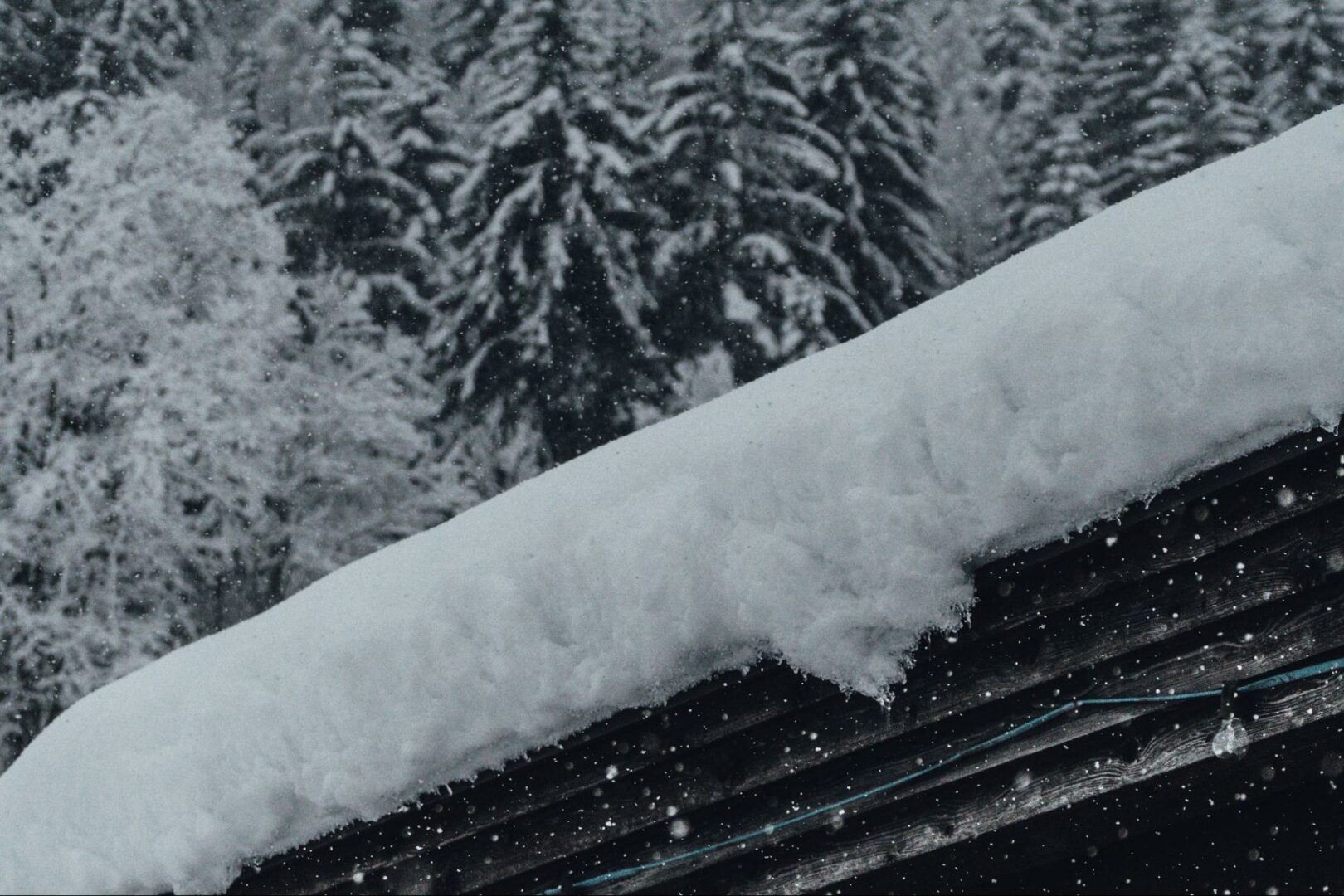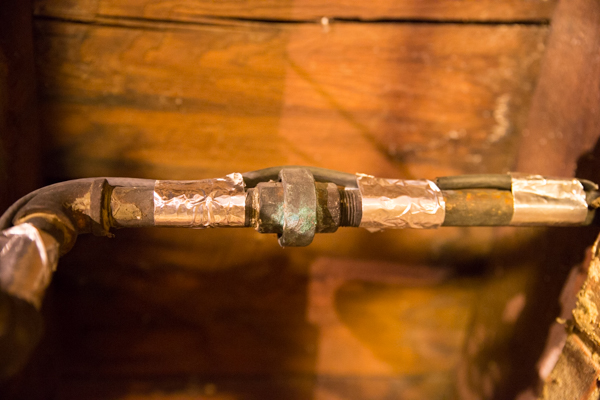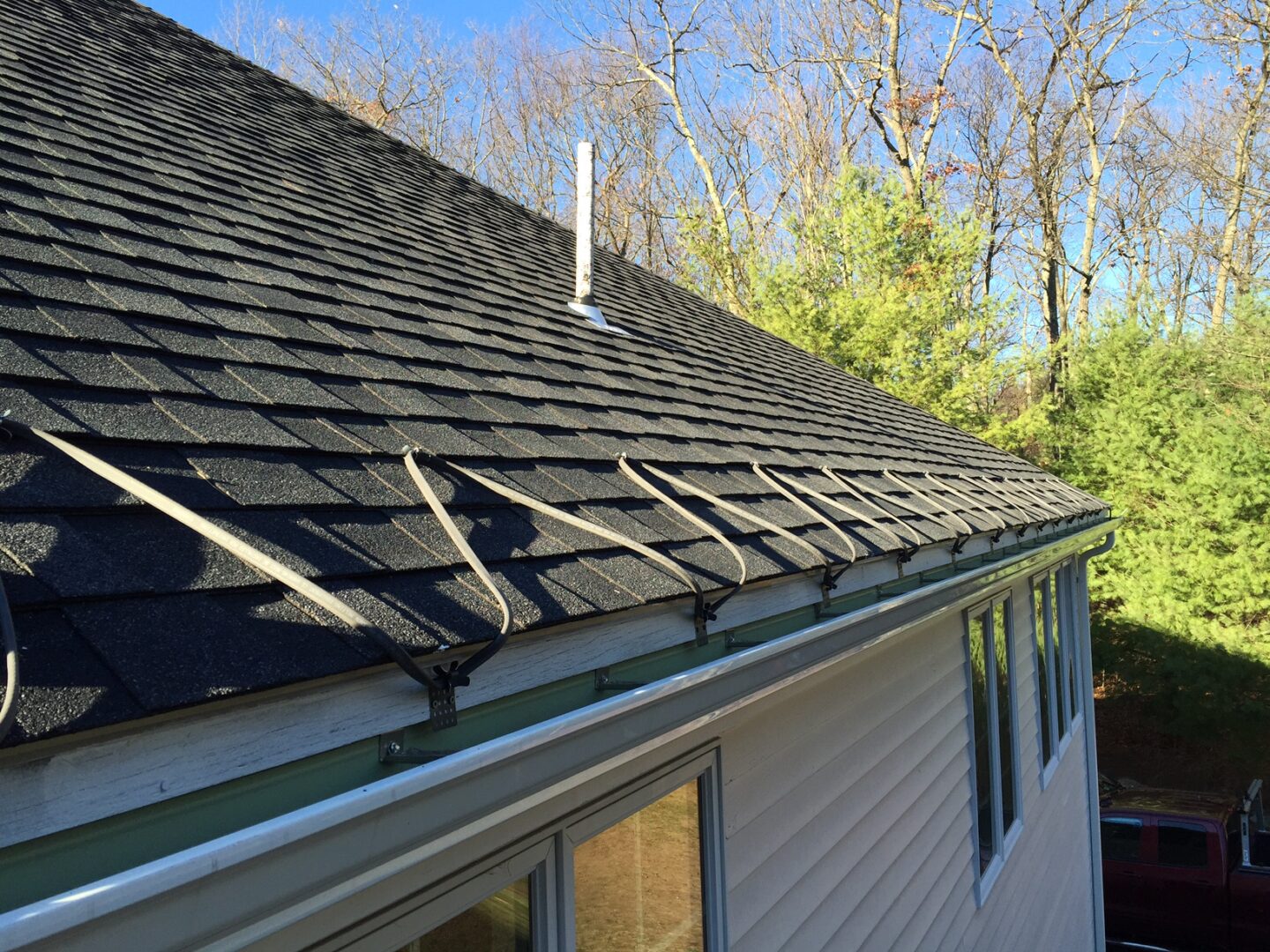
Winter, a season of joy, festivities, and serenity, can sometimes bring unwelcome challenges for homeowners. One such challenge is the formation of ice dams. This article seeks to shed light on the effectiveness of ice dam heater cables as a solution to this issue and guide homeowners in their choices.
Understanding Ice Dams
An ice dam is a build-up of ice that occurs at the edge of roofs, typically in the gutters. It forms when melting snow doesn’t drain properly, which causes water to back up, seep under the shingles, and enter the home. Ice dams can lead to various issues for homeowners, including structural damage, sagging gutters, compromised insulation, mold growth, and interior leaks.
The Power of Heat Cables
Heat cables, often referred to as ice dam heat cables, are electrically heated cables designed to be installed on roofs, in gutters, and downspouts. They produce heat to melt snow and ice, and to help ensure that water flows freely off the roof.
There are mainly two types:
Self-regulating Heat Cables
Self-regulating heat cables change their heat output based on the nearby temperature. This feature is due to their special design. Inside the cable, there’s a semi-conductive material that reacts to temperature shifts. If it gets colder, the material allows more electricity to pass through in order to create more heat. If it gets warmer, the material reduces the flow of electricity, which means less heat.
Energy Efficiency
Self-regulating heat cables have a smart feature that makes them highly energy efficient. They use more power only in extremely cold conditions and less power as the temperature rises, which means energy is not wasted.
Safety and Longevity
The self-regulating nature of the cables also makes them less likely to overheat. As the cables warm up, they automatically reduce their heat output, to reduce the risk of damage or wear.
Versatility
Thanks to their adaptive heating capability, self-regulating heat cables can be overlapped without the worry of overheating or hot spots, which is a common concern with constant-wattage cables.
Applications
While they are frequently used for ice dam prevention, self-regulating cables are also common in pipe freeze protection to help keep walkways clear of ice, and maintain specific temperatures in industrial applications.

Self-regulating heat cables are an innovative solution that adjusts heat output in real-time based on environmental needs. This adaptability ensures efficient energy consumption, enhanced safety, and reliable performance, which makes them a preferred choice for various applications.
Constant-wattage Heat Cables
Constant wattage heat cables maintain a consistent heat output across their length regardless of the surrounding temperature. Unlike-regulating cables that adjust based on external conditions, constant wattage cables are designed to emit a consistent level of heat. Let’s take a look at how they work and what makes them unique:
Basic Functionality
Constant wattage heat cables have a set power output, usually specified in watts per foot or meter. For example, a 10-watt-per-foot cable will consistently produce 10 watts of heat for every foot of its length when powered.
Steady Heat Output
Since the cables do not adjust their heat output based on the surrounding temperature, they consistently emit the same level of heat, which makes them predictable in their performance.
Energy Consumption
Given their constant output, these cables generally consume a steady amount of power when turned on. They don’t have the energy-saving adaptability of self-regulating cables, which can adjust their consumption based on needs.
Safety Precautions
Because they do not self-adjust, it’s essential not to overlap constant wattage cables. Overlapping can cause overheating, and can potentially damage the cable or create a fire hazard.
Control Mechanisms
To avoid energy waste and to enhance safety, constant wattage heat cables are often paired with external control systems. These can include thermostats, timers, or manual switches, that allow users to turn the cables on or off based on specific conditions or needs.
Applications
Constant wattage heat cables are commonly used for pipe freeze protection, ice dam prevention, and other applications where a steady heat source is desired. However, care must be taken to install and use them appropriately to prevent potential hazards.
While they lack the adaptive capabilities of self-regulating cables, they can be effective when used correctly and paired with appropriate control systems.
Benefits of Heat Cables for Ice Dam Prevention
The use of heat cables for ice dam prevention offers multiple advantages that ensure the safety and longevity of your home during the winter months. Here are some of the primary advantages:
Eliminates Ice Dam Formation
The most obvious advantage is the prevention of ice dam formation. By melting the ice and snow at crucial points, the heat cables prevent the accumulation of ice at the edge of roofs.
Protects the Roof, Gutters, and Downspouts
By preventing the buildup of ice dams, heat cables reduce the weight and strain on roofs, gutters, and downspouts. This can protect structures from potential damages, such as sagging or breaking.
Prevents Water Damage and Leaks Inside the House
Ice dams can cause water to back up and seep under roof shingles. Heat cables mitigate this by ensuring water from melted snow and ice has a clear path to flow off the roof, thus preventing leaks and subsequent water damage to interiors.
Energy-efficient Operation with Thermostatic Control
Some modern heat cables come equipped with self-regulating features or thermostats. These ensure the cables consume power only when necessary, to provide an energy-efficient solution to ice dam prevention.
Selecting the Right Heat Cables
When selecting the ideal heat cables for your home, it’s essential to make informed decisions tailored to your specific needs.

To start, take into account the distinctive structure and design of your home. As emphasized in Warmup’s guidelines on roof deicing, it is crucial to accurately size and calculate the necessary length of the heat cables for optimal coverage and efficiency. Warmup offers convenient pre-packaged kits ranging from 6 to 100-foot lengths, complete with a sealed power connection featuring a 30-inch power cord and plug, as well as a sealed end termination.
Understanding the wattage and temperature ratings of the cables plays a crucial role in determining their heating capacity and energy consumption. By using self-regulating heat cable, you eliminate much of the guesswork as the cables adjust their output based on the exterior temperature.
By integrating these considerations, homeowners can select the most effective and energy-efficient heat cables to protect their homes from the adverse effects of winter.
Professional Installation Process
- Professional installation ensures the optimal functionality and safety of the heat cables.
- A professional will place cables in a zigzag or serpentine pattern, to ensure even heat distribution and correct electrical connections.
- Professionals adhere to safety standards, to help minimize the risks associated with electrical and height work.
Maintenance and Inspection
To keep your electronics in top shape, it’s important to regularly check cables for any signs of damage or wear. This simple step helps prevent potential issues and ensures everything works properly. If you find any damaged or malfunctioning cables, it’s best to replace them right away to avoid any further complications.
It’s also a good idea to regularly check for any debris or dirt that might build up. This can affect how well your devices work. By taking these simple but important steps, you can make sure your electronics last longer and keep performing at their best.
Using Heat Cables Effectively
For optimal performance, it is recommended to activate cables during cold snaps or when early signs of ice are detected. By utilizing them judiciously, and turning them off when not required, you can ensure efficient operation. Modern cables are equipped with advanced controls and sensors that allow for precise activation based on temperature or moisture levels.
This intelligent feature enhances their overall functionality, which makes them a reliable solution for maintaining safe and ice-free environments.
Gutter Deicing Controls: The ASE-DS9 from Warmup
Warmup’s ASE-DS9 stands out as a notable gutter deicing control, to enhance the usability of heat cables. Specifically designed for this purpose, the ASE-DS9 integrates seamlessly with the heating system to provide automated control based on environmental conditions. Its advanced sensors detect temperature and moisture levels, ensuring that the heat cables are activated only when there’s a risk of ice formation.
This not only optimizes the efficiency of the system but also reduces unnecessary energy consumption. With tools like the ASE-DS9 from Warmup, homeowners can be confident in maintaining a consistent, ice-free gutter system throughout the colder months, all while managing energy usage effectively.
Combine Heat Cables with Other Preventive Measures
Proper insulation and ventilation are crucial to maintain a balanced temperature in the attic, which in turn reduces the chances of warm attic air melting the snow unevenly on the roof. By regularly clearing off the snow, homeowners can prevent excessive buildup and potential damage. Using a roof rake is a safe and effective way to clear off the snow without the need for climbing, that will help ensure the longevity and integrity of the roof.
Select the Most Effective Roof Deicing Systems with Warmup
Don’t let winter’s chill wreak havoc on your home. Switch to roof deicing systems for a comprehensive solution that champions the safety and longevity of your property.
Warmup offers an array of innovative, energy-efficient deicing solutions tailored to your specific needs. With a focus on optimal performance and durability, we strive to provide homeowners peace of mind through the harsh winter months.
Contact us today for more information!


